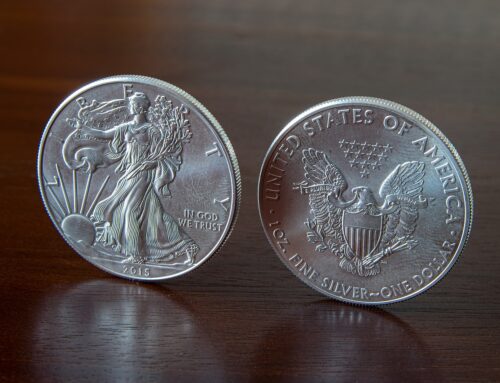Your Friday night poker game is going to be a costly form of entertainment unless you’re clear on three variables: the specifics of each hand that you’re dealt (obvious); the size of your bankroll (fairly obvious); and your skill relative to that of your opponents (not always so obvious). Your edge can be difficult to assess, but there’s a useful rule of thumb for that: every half-decent player knows that if you sit down at a card table and you don’t know who the patsy is, you’re the patsy.
That’s not much different to your day job. As a professional fund manager, you also need to balance three sets of variables: the market conditions; your client’s mandate; and your competitive advantages.
Here’s my guess about how you do this.
- Conditions. You spend virtually all of your time doing the important work of analysing securities, managing portfolios, and reporting to clients. That seems fair enough because that’s what you’re paid for, isn’t it?
- Mandate. You spend a little time understanding your client’s objectives and constraints when they first transfer their business to your firm, and then the guys in Compliance keep an eye out for any transgressions. That should do it, right?
- Edge. You spend practically none of your time consciously assessing the investment capabilities of your firm and team in relation to those of your competitors. You’ve got a team of people who are highly educated, highly experienced, and highly paid. That ticks the boxes, surely?
A poker player who plays without an edge is relying on luck, and that’s not a smart approach if you intend to be at the table for a while. Similarly, in the zero-sum game of trying to generate alpha, if you play for long enough without an edge, you will be carried out. There’s a big pool of money that’s chasing alpha, but most of the managers of that money fail to find it. Over time, 70% or more of active fund managers fail to beat the market averages after fees. Some significant proportion of the field can’t identify the patsy.
There are two secular shifts that account for the difficulty.
- Institutionalisation. Over the past 30 years the bulk of the easily-identified patsies has left the game. The fund-management industry is now largely institutionalised and populated by very smart and qualified people like you. The almost complete absence of uninformed private investors means that the average skill level in the industry has increased. And this, in turn, means that some proportion of the remaining group of very smart and qualified fund managers, by definition, has no competitive advantage.
- Machine Learning. Already underway is a second secular shift that forces you to ask with renewed urgency whether there is a whole new cohort of patsies. The confluence of big data, artificial intelligence and machine learning means that if a machine can work out what you do, it’s only a matter of time before it eats your lunch.
The design of your investment process should have as its centrepiece your competitive advantages. This means that it’s a good idea periodically to make a clear-eyed assessment of at least two things:
- Behavioural. Are you able to do something (obviously legal and ethical) that other fund managers can’t do or won’t do?
- Informational. Do you know something that other fund managers don’t know and that machines can’t learn?
With that done, your process-design involves devising or refining a system, a series of repeatable steps, that utilises your edge to convert data into alpha. The system for conversion can be purely quantitative, it can be qualitative, or some combination of the two. And it can involve the use of machines or not.
Many fund managers are not sufficiently clear on what their process really is, and where alpha might reasonably come from in the future. What they call their investment process, is not so much something that has been consciously designed, but rather more a hodge-podge that might coalesce in a number of ways.
- Happenstance. The guys from Marketing get their way for the launch of a new fund in a new area because they say it’s a hot story right now and they can sell a bucketload.
- History. The way that clients’ money gets invested is an awkward compromise between the two teams that were thrust together after Management’s most recent attempt to survive through achieving scale.
- Hype. Your process is really a story that you tell to soothe your clients or excite your prospects, but which is only loosely, if at all, connected to what you and your team actually do.
If you don’t want to be a patsy, you need to make a dispassionate assessment of the nature and extent of your competitive advantage, or even hire someone to help you make the assessment. And then you need to design a process that exploits the advantage that you’ve identified. A lack of clarity about your edge will generate significant quantities of noise. It will make you do things that you shouldn’t do and make you not do things that you should, both of which will result in the destruction of alpha.
When you go through the inevitable fallow patch in performance, you will be tempted to blame it on something. Publicly, the prime suspect is usually an irrational market; privately, the target might be your irrational colleagues. Whatever the supposed cause of poor performance, the inclination to assign blame is a symptom of noise, and noise will nudge you into looking in the wrong places when your process-design is really the issue.
One of the classic errors that fund managers make when their performance is poor is to redouble their efforts at sticking to their investment disciplines. This sounds right and even heroic, but it is only right if you’re being disciplined about sticking to an investment process that has been well designed in the first place. If the process is poorly designed, in that it doesn’t offer the prospect of a better-than-even chance of generating alpha, sticking to that process is just being disciplined about destroying alpha. Better discipline will not fix a design problem.
- In what ways do you have behavioural or informational advantages over your competitors?
- How are those advantages incorporated into the design of your investment process?
- When next will you reassess your edge and your process-design?







Leave A Comment